-
Posts
5,118 -
Joined
-
Last visited
Content Type
Profiles
Forums
Gallery
Events
Posts posted by RGL
-
-
-
-
-
-
Bugger, this is a whole new world. I reckon I've got about a month to go on this one, then a whole garden to weed and mulch plus my sideline of rowing coaching in summer. The next build will be a lot slower but bigger. I want to get this airbrush thingy sorted plus figuring out a compressor too.
-
-
I have no idea where to start, internet research I expect, then shop for the cheapest price.
- Canute, Old Collingwood, WackoWolf and 2 others
-
 5
5
-
Thanks gents, I'll leave the talented to the scratch builders, I have several of Jean Boudriot's books (who recently passed), that is talent.
I use Tamiya rattle cans mostly for the big stuff, then washes and drybrushing. My next project is huge and I think the time has come to buy an airbrush.
- Old Collingwood, WackoWolf, Kevin and 3 others
-
 6
6
-
-
As a massive exercise in futility, I have commenced rigging the inboard parts of the torpedo net booms. I have completed the port side using tiny eyelets as rigging blocks (they don't Kate them this small), running as described in the AOTS to the deck winches. I have not found anyone else stupid enough to do this method yet at this scale. I have lines running everywhere down the sides of the ship that will eventually be attached to the torpedo nets.
Running alongside the hull you will notice a wire, rigged through eyelets, there are two turnbuckles attached for each boom to the wire. I had to use wire as the elastic rope will stretch away from the hull and look silly (or uneven, same thing).
When the nets finally go on there is more rigging required which I just can't do yet. Photos to follow.
-
Looking at the collection of paints you have in the background, I reckon you know what you're doing.
30cm at 1/700 is massive, I've seen some of the detail kits for this ship at 1/350 and it's very complex so you've got some work ahead of you.
- cog, Old Collingwood and Canute
-
 3
3
-
Amazingly I've had to add lots of extras as well, both the pontos & Flyhawk upgrade sets, extra doors, rigging pieces, spares from other frets. I'm not good enough to scratch build at this scale.
- Old Collingwood, mtaylor, Canute and 1 other
-
 4
4
-
The answer is a really good set of tweezers. And a back roller.
- Old Collingwood, cog, Canute and 2 others
-
 5
5
-
Moving along, Pontos has a fairly elaborate set up for the torpedo nets. The AOTS book shows the rigging lines for them, which I shall now have to interpret to get correct.
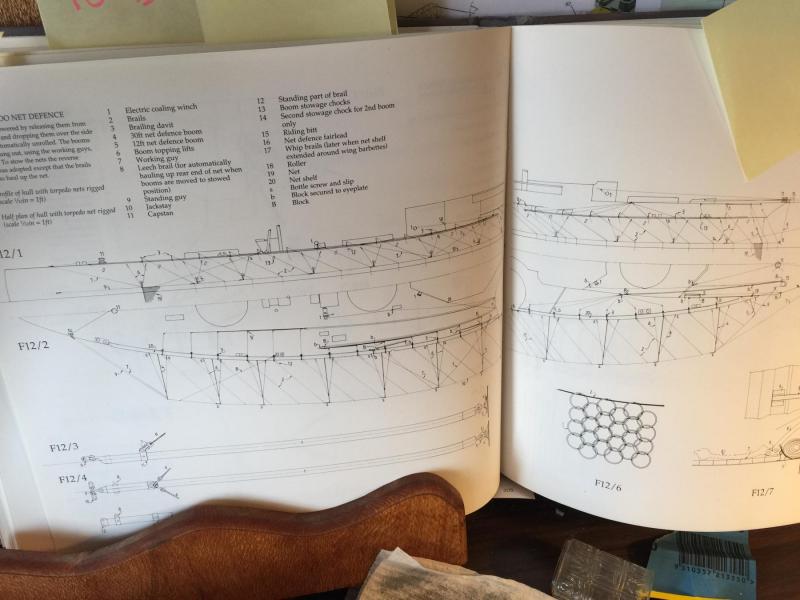
The shelves on the gunwales hold the nets when stowed, but as they will be deployed, they stand out and are frustrating to place.
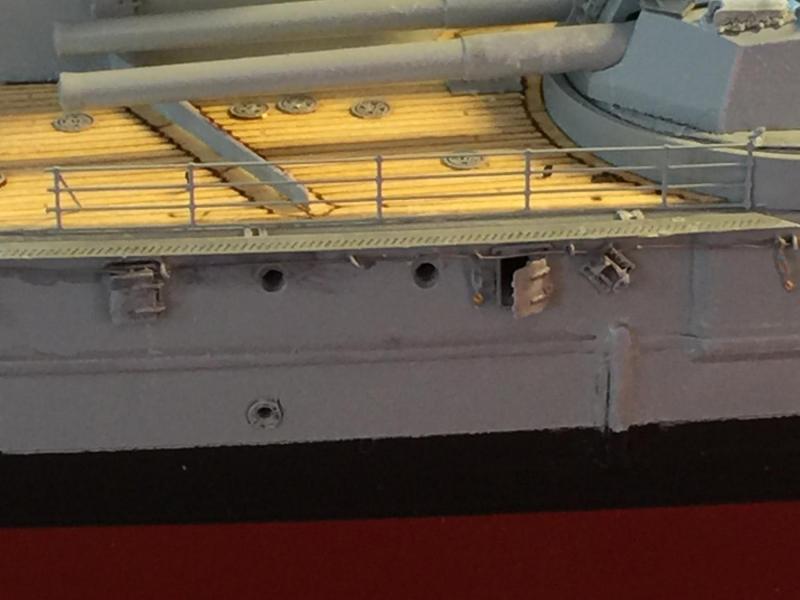
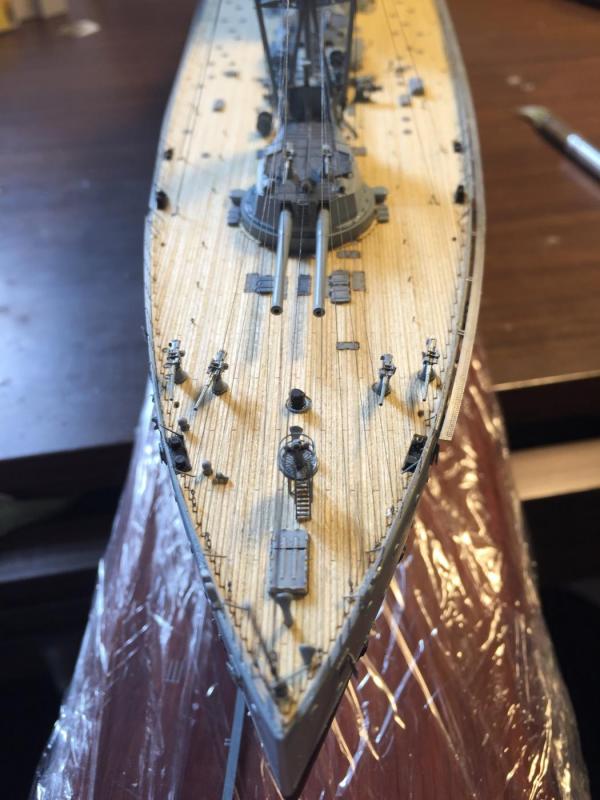
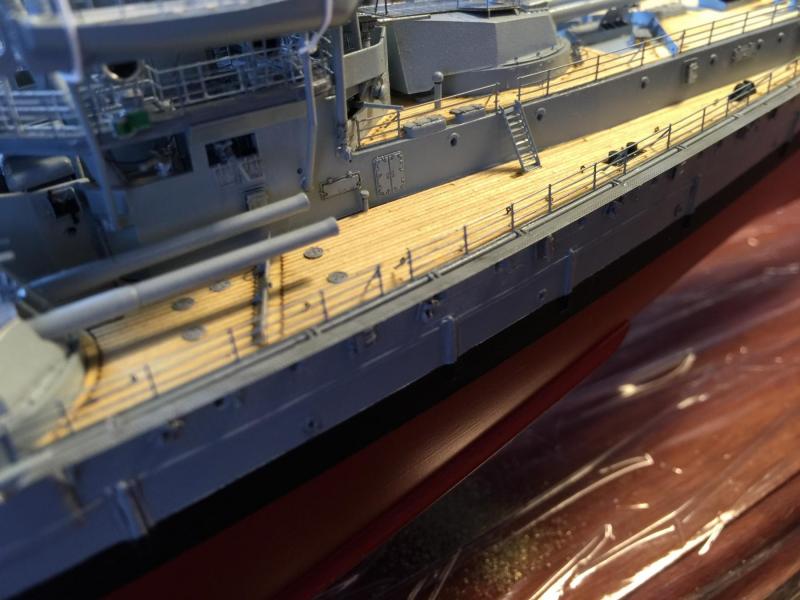
I have added the eyelets for the booms and the boat booms.
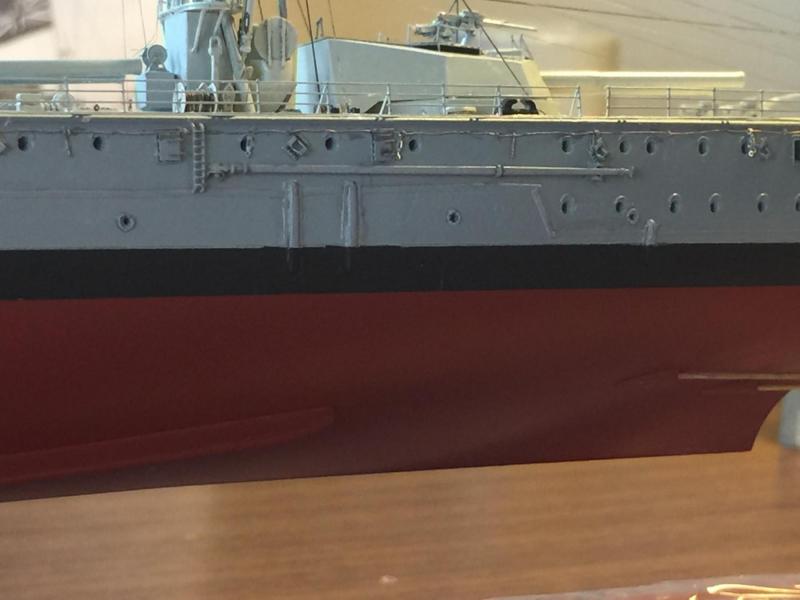
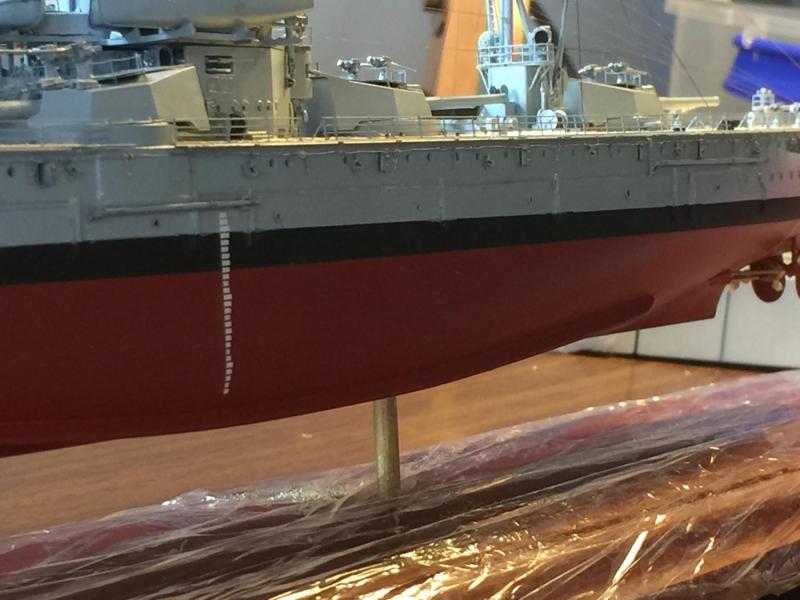
Finally the net davits, from which I will run the onboard rigging first before I set the booms and nets, again working inboard to outboard, then I can add the awning stanchions, the davits the last of the rigging and the flags, and the ships cats, before the final stage of adding the booms and nets.
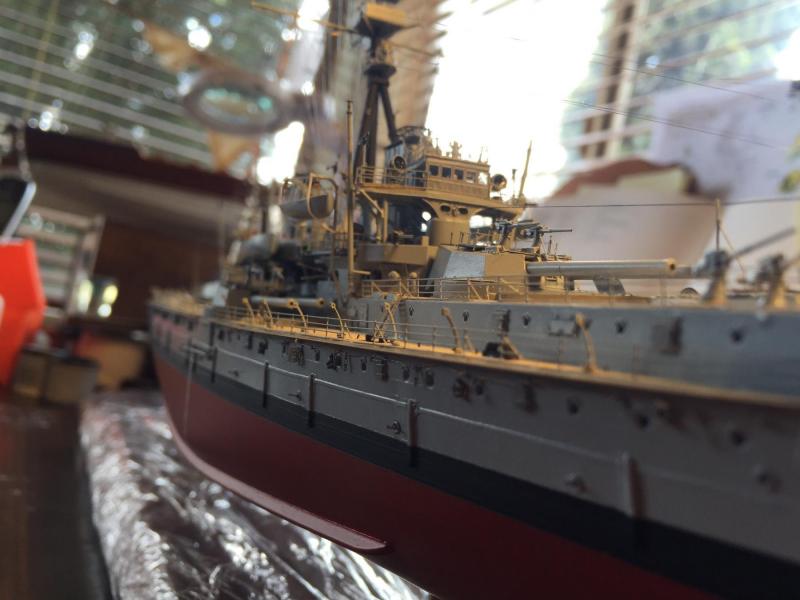
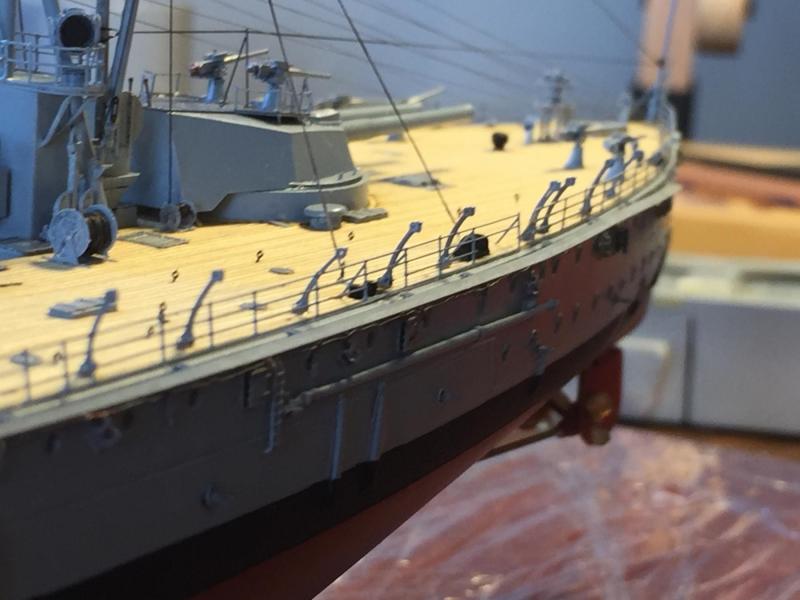
-
-
- FatFingers, CDW, Canute and 18 others
-
 21
21
-
Now, I have finally placed the old girl on its Jarra Base, (which I have wrapped in plastic to save drips.
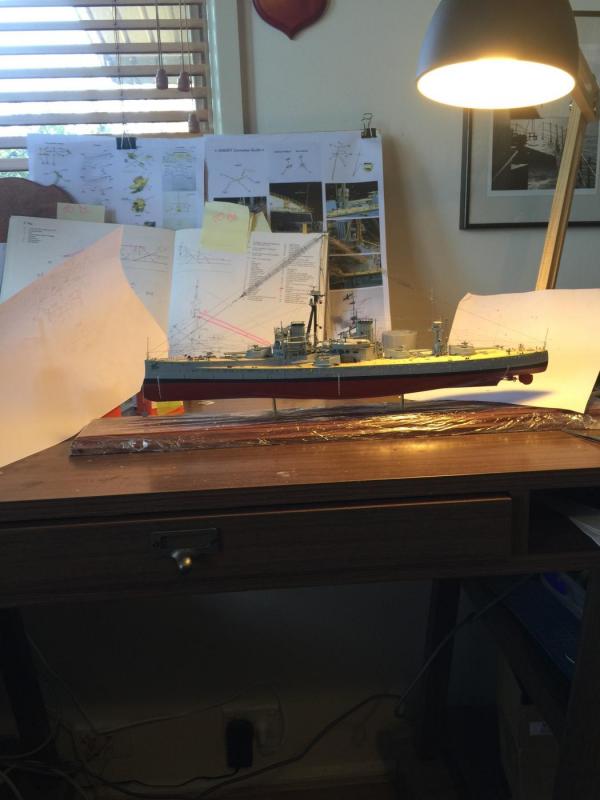 .
.Next is the flagstaff's, which I have to add next as the rest of the rigging requires doing before the railings.
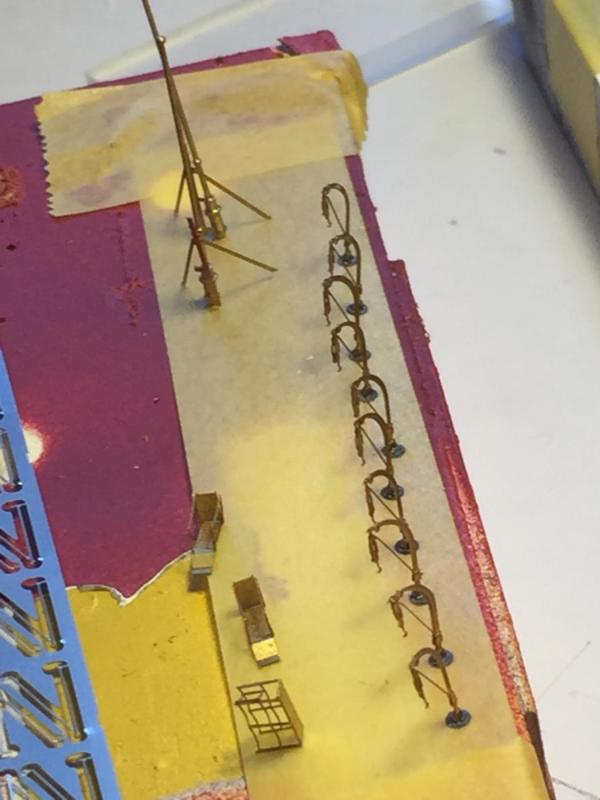
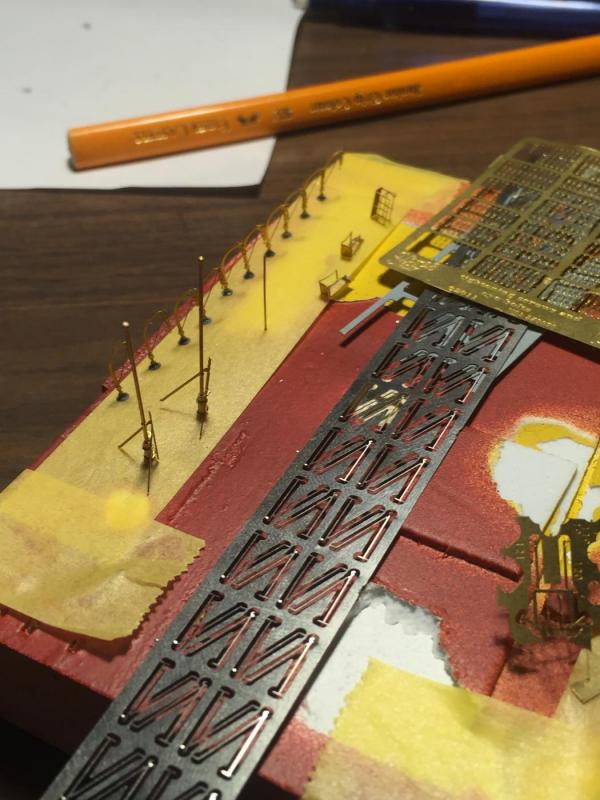
After the placing of lots of turnbuckles for belaying points, I have added the awning and hammock lines. I also rigged the coaling derricks on the main mast.
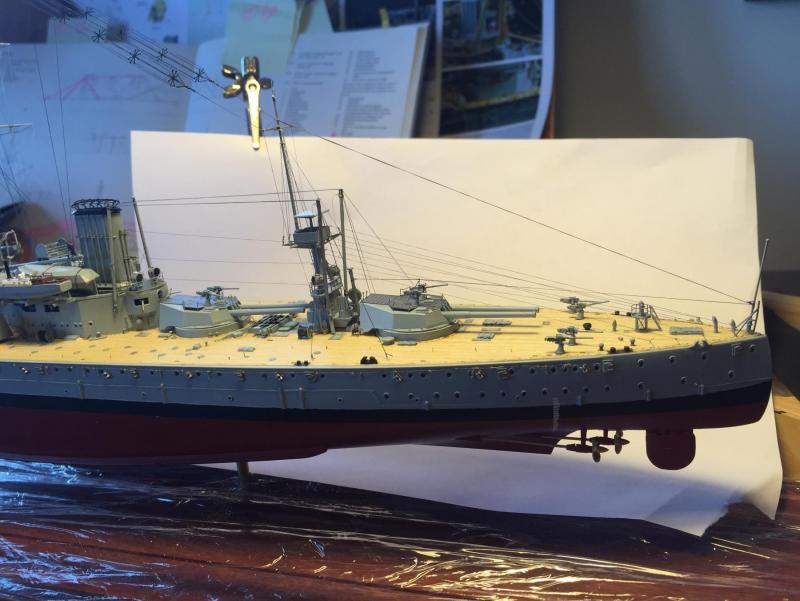
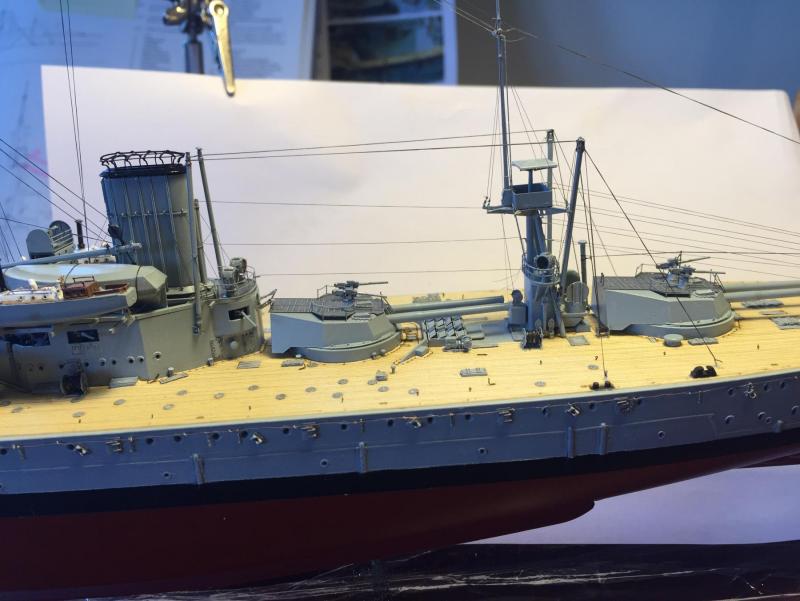
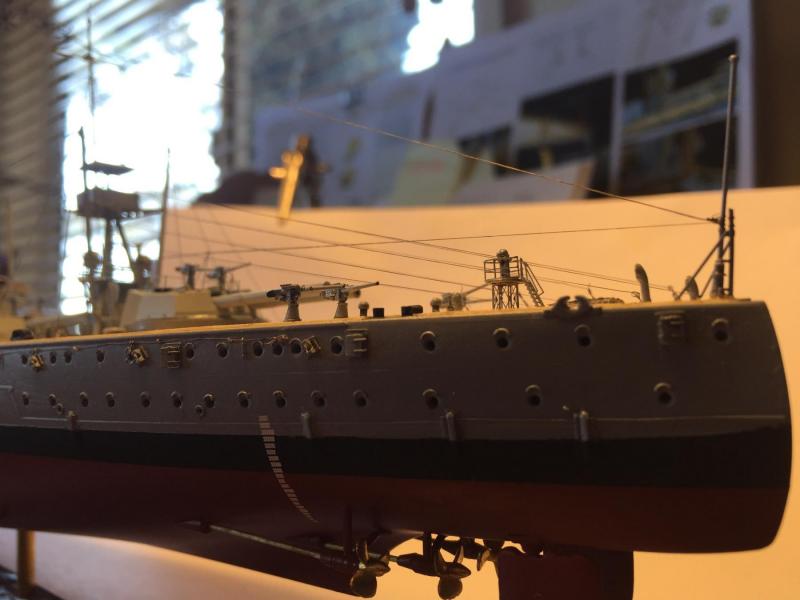
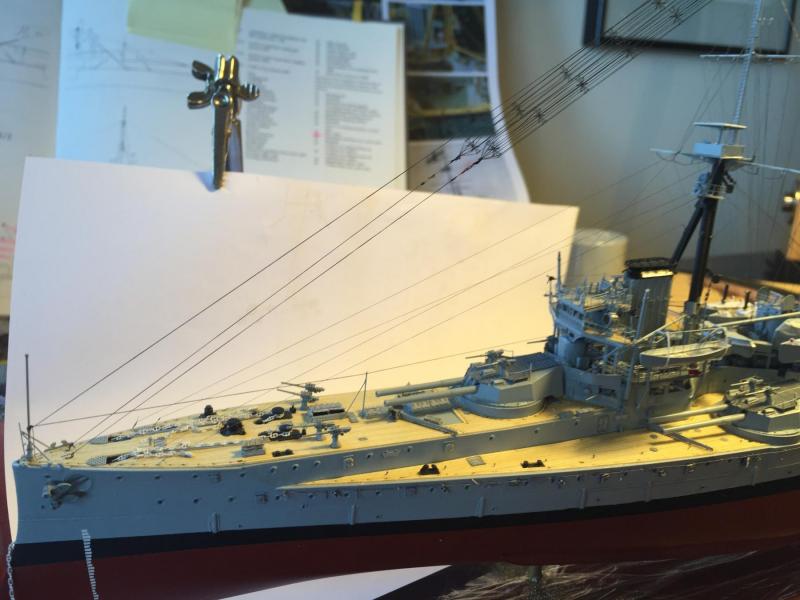
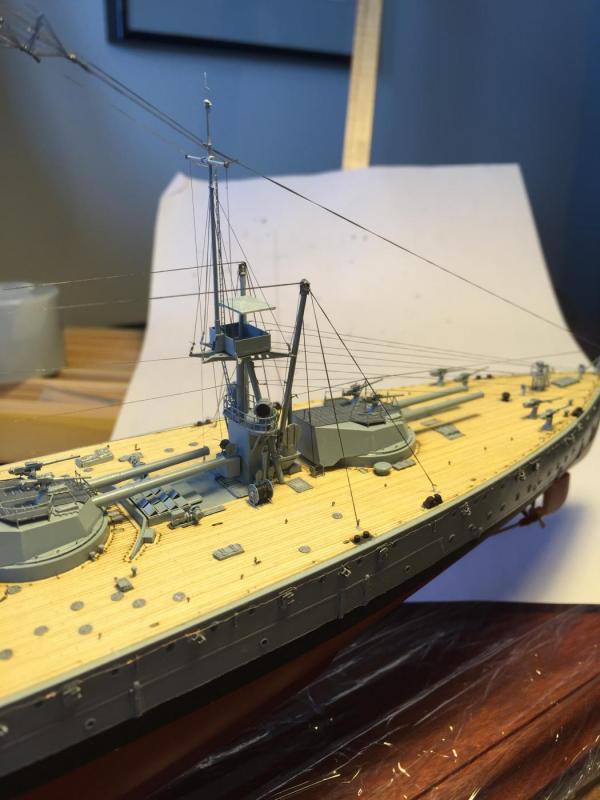
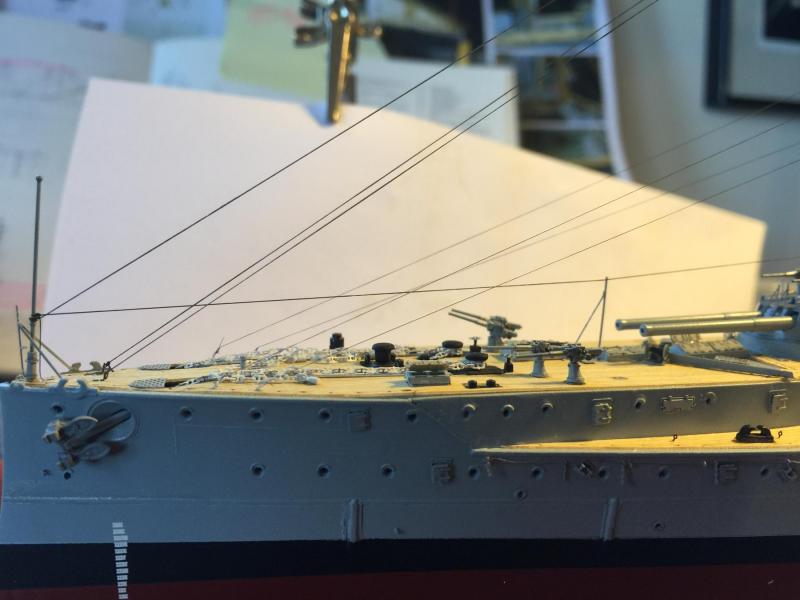
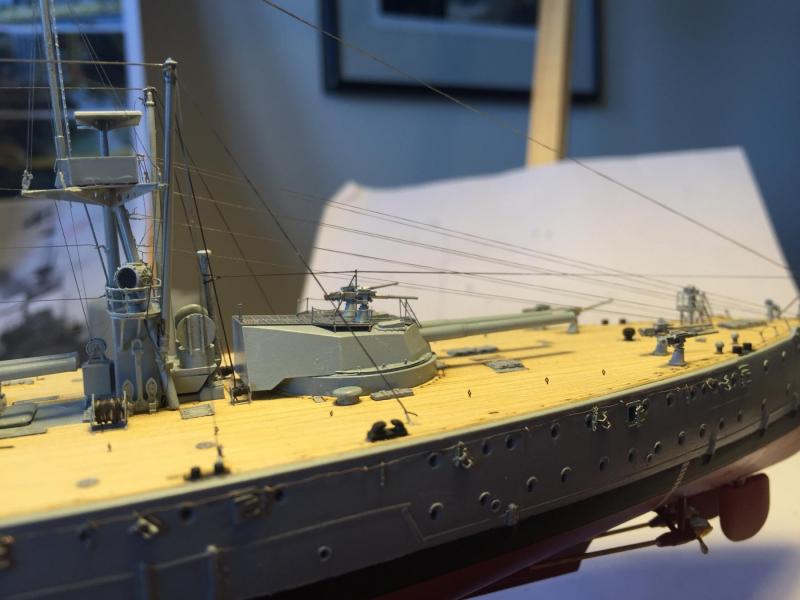
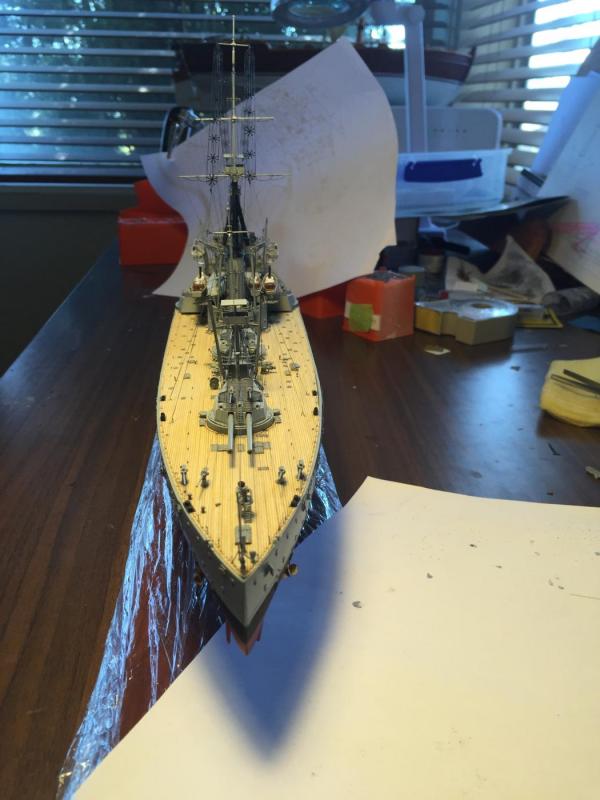
Finally, in the back ground to my desk is a photo I took at dawn back last century from the HMAS Bendigo
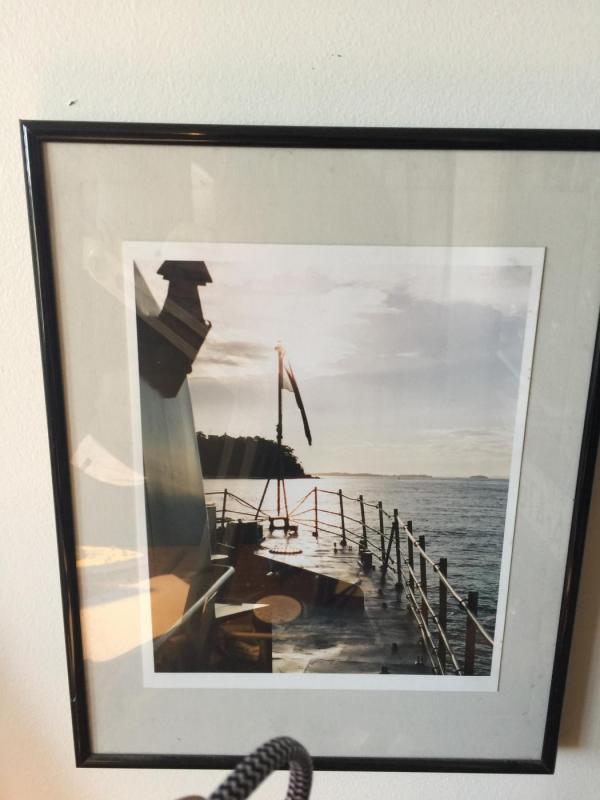 of a tramp ship that had just deposited 300Kg's of Heroin on our fair shores. It didn't get away.
of a tramp ship that had just deposited 300Kg's of Heroin on our fair shores. It didn't get away. 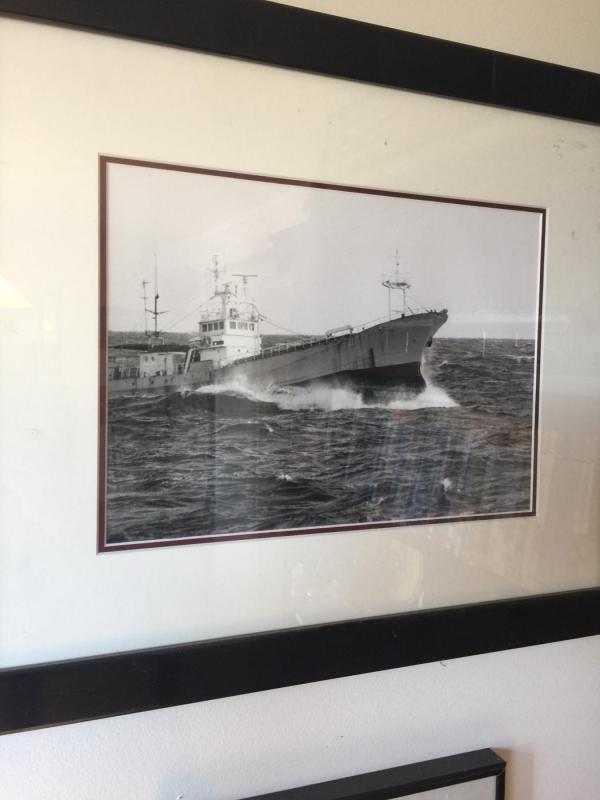
-
Bad typing, put a drop of glue onto a piece of hard plastic, dip a pin in it, then place said drop onto the piece you want to stick together?
- Old Collingwood, WackoWolf, mtaylor and 4 others
-
 7
7
-
Puddles of glue on a hard plastic surface, dip a pin in or an off it of brass etch the apply to either the piece I'm using or the place it's going (if that makes sense?). If it's load bearing I'll put a tiny drop on top of the piece that bears weight.
The pins get a build up of hard glue after a while which I burn off then sand back to a clean surface. Less is more with CA.
Like a tall ship, it's lots of pre prep, as one something has been painted off kit it will not fit as the tolerances are so small, if you paint something that fitted into a slot pre painted, it won't fit post painted, or it won't fit flush.
CA works best on unpainted etch or plastic but the result is usually crap after painting as the detail is lost, especially if you're going to have differing colours, so I try and do everything as piece work, and use a tiny bit of matte coat by hand on glossy bits of CA. I'm not a proponent of over spraying with a matte coat as at this scale it loses detail to my eye (I have very good close vision and it upsets my OCD).
I like to pre drill required holes then add eyelets afterwards otherwise the hole fills up with paint and you can't rig without having to risk major breakages clearing holes.
I hope this makes sense?
-
-
I've been very tempted to do this in 1/350, looking forward to it
-
-
Don't get disparaged, I have spent 5 days prepping all the final stages of my build, all the etch is done and now just to paint. It shouldn't be work, that pays the mortgage and school fees. And for beer of course.
-



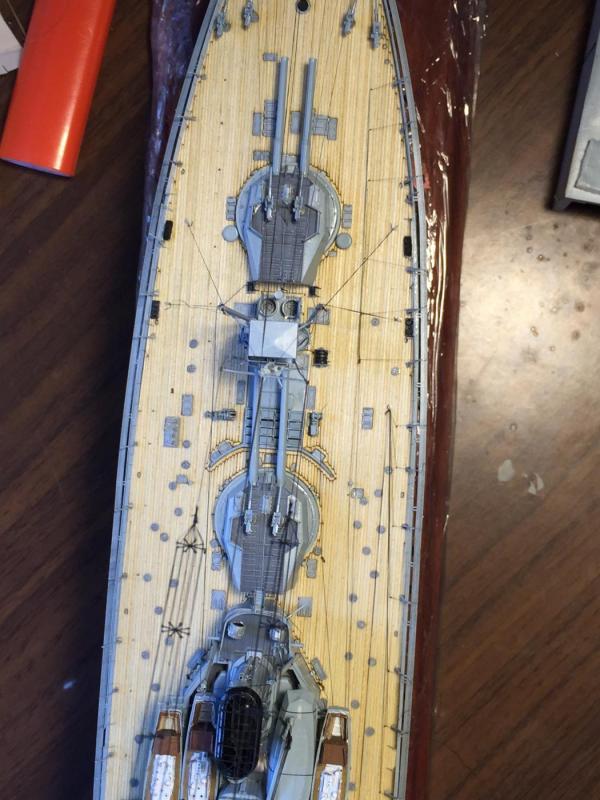
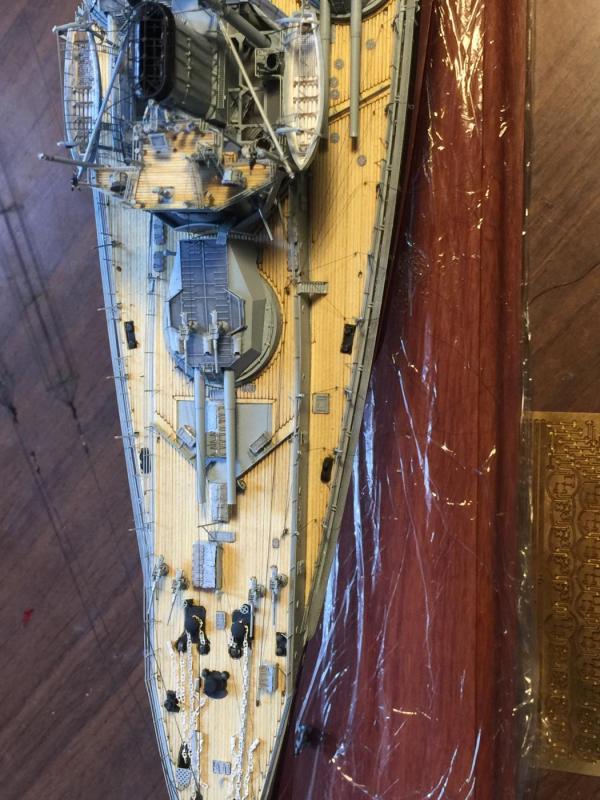
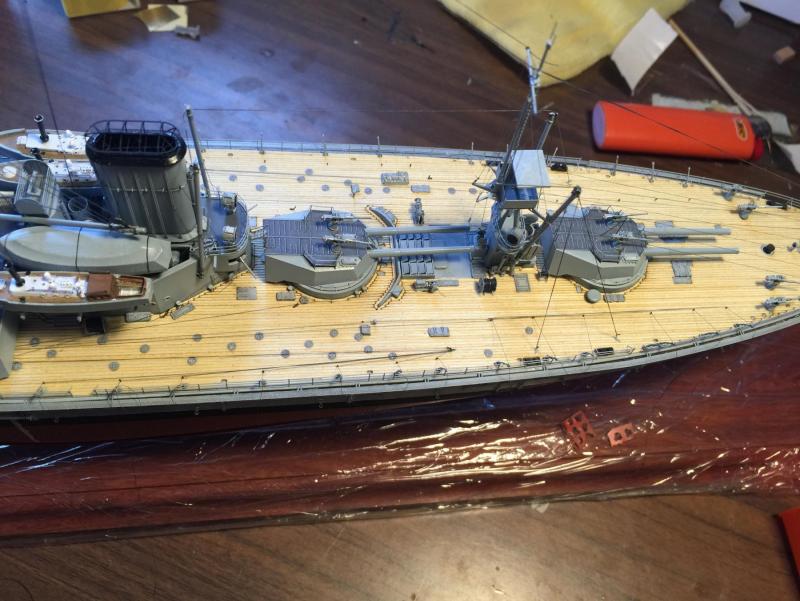
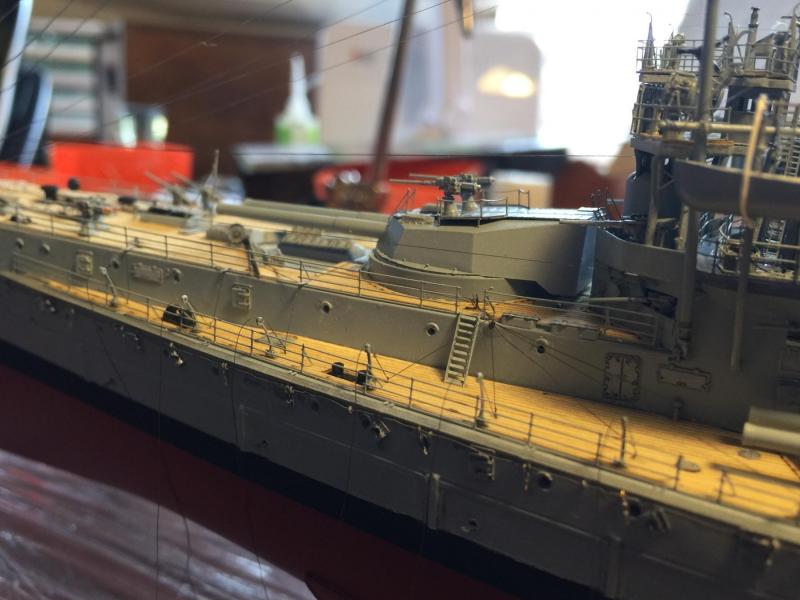
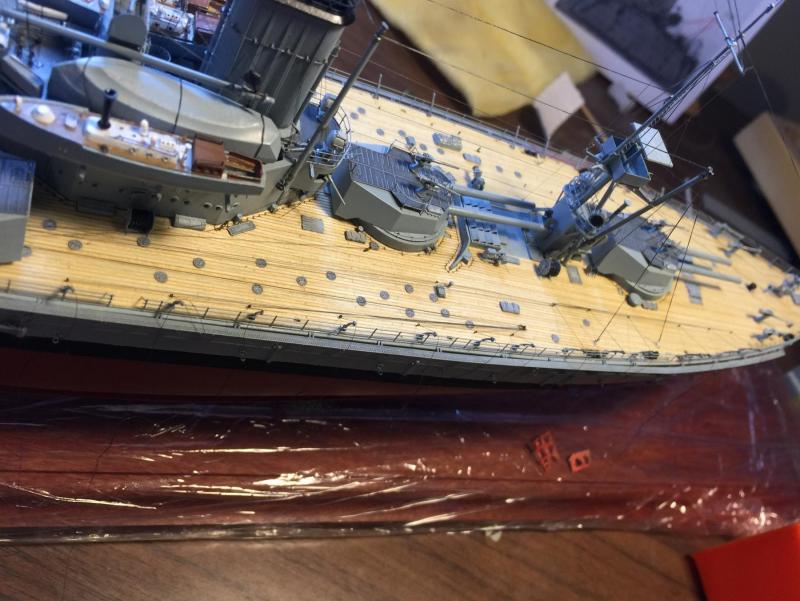
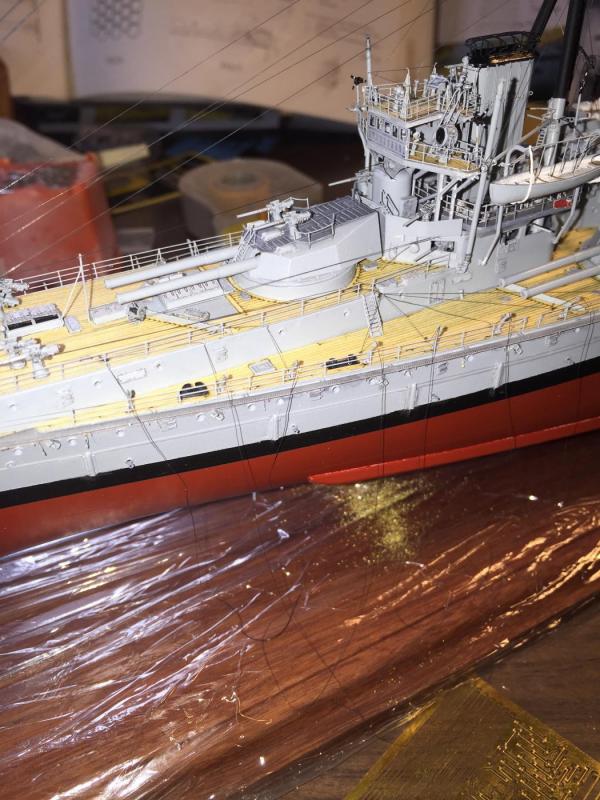
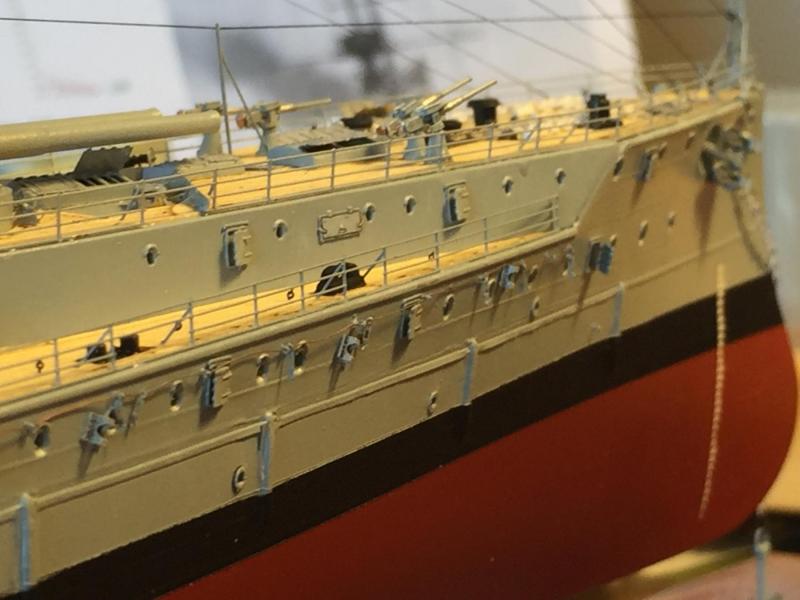
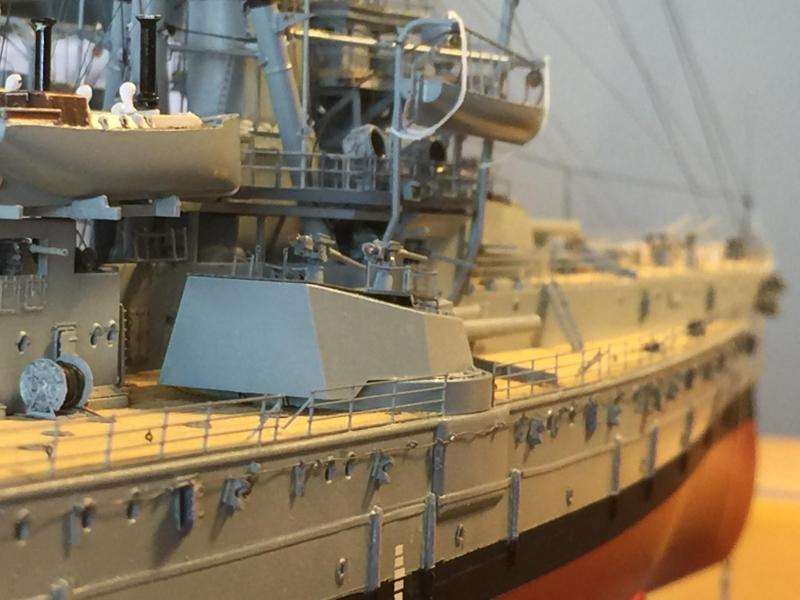
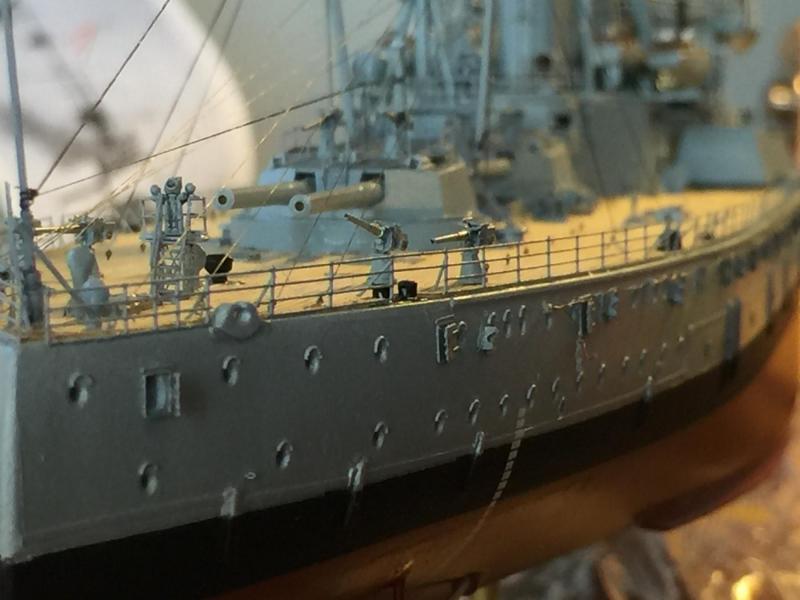
Batelina by donrobinson - FINISHED - MarisStella - 1:10
in - Kit build logs for subjects built from 1851 - 1900
Posted
Well, you made that look easy.